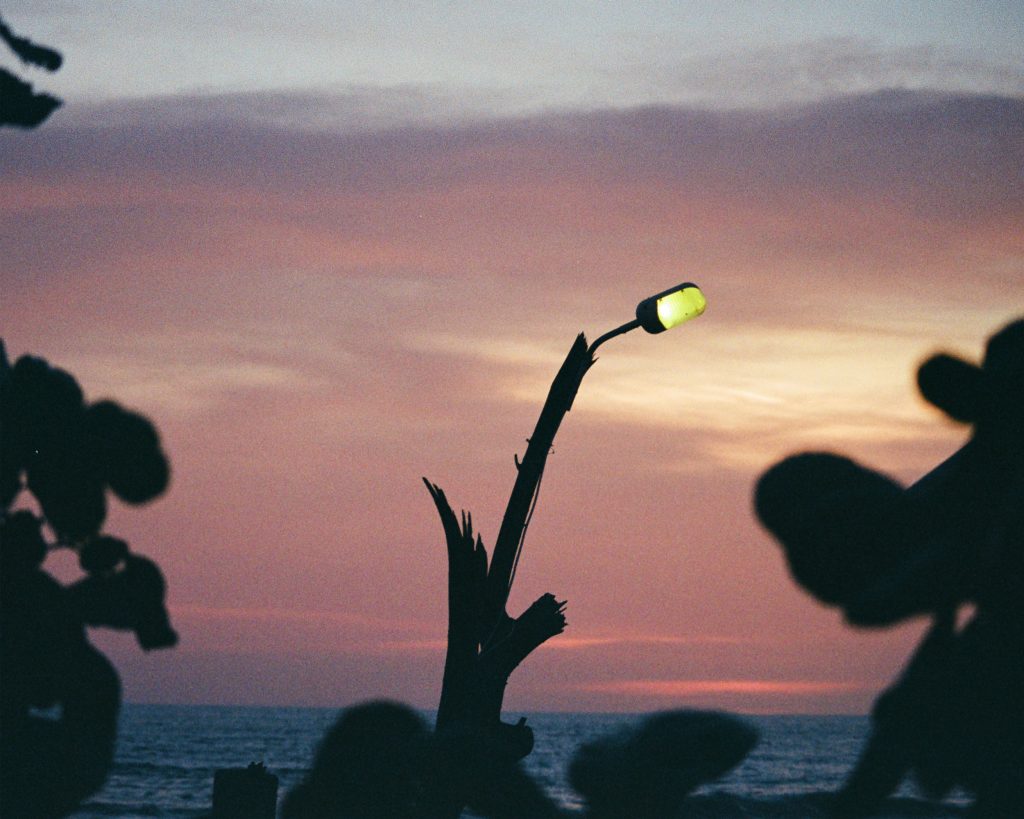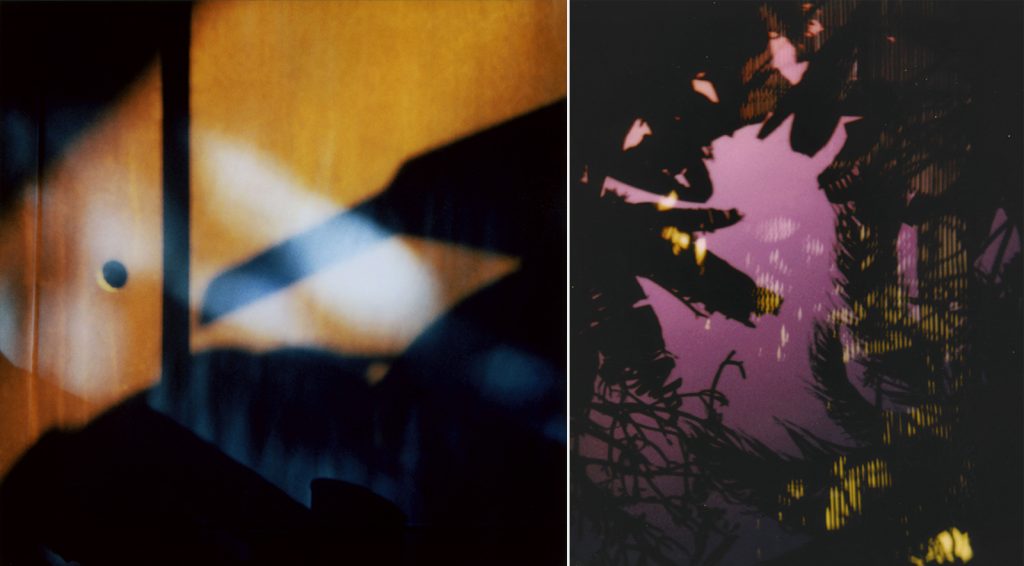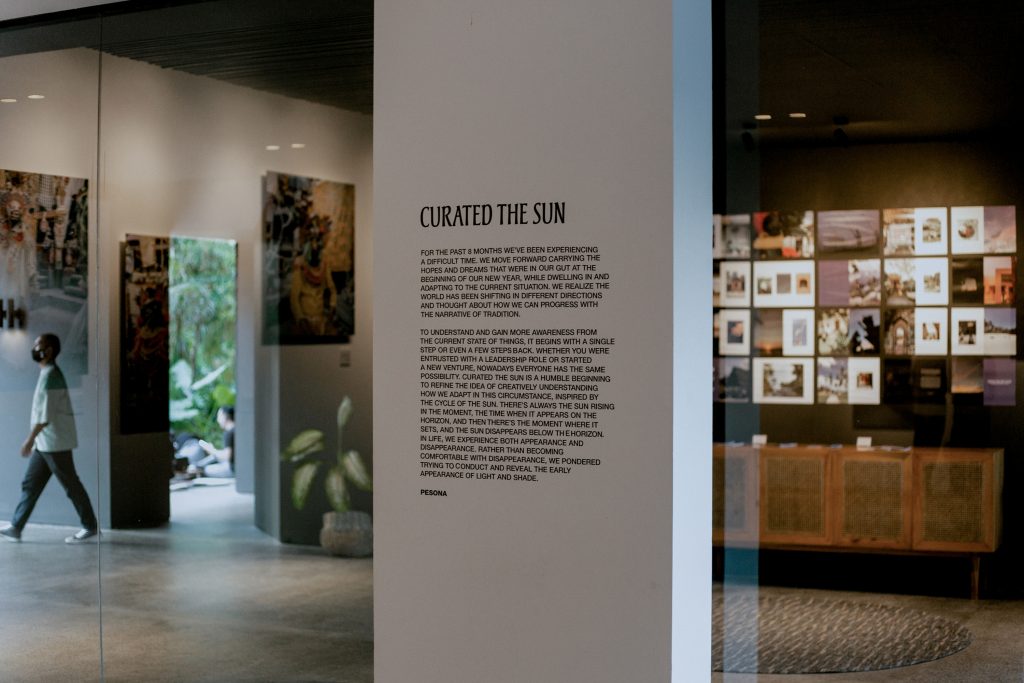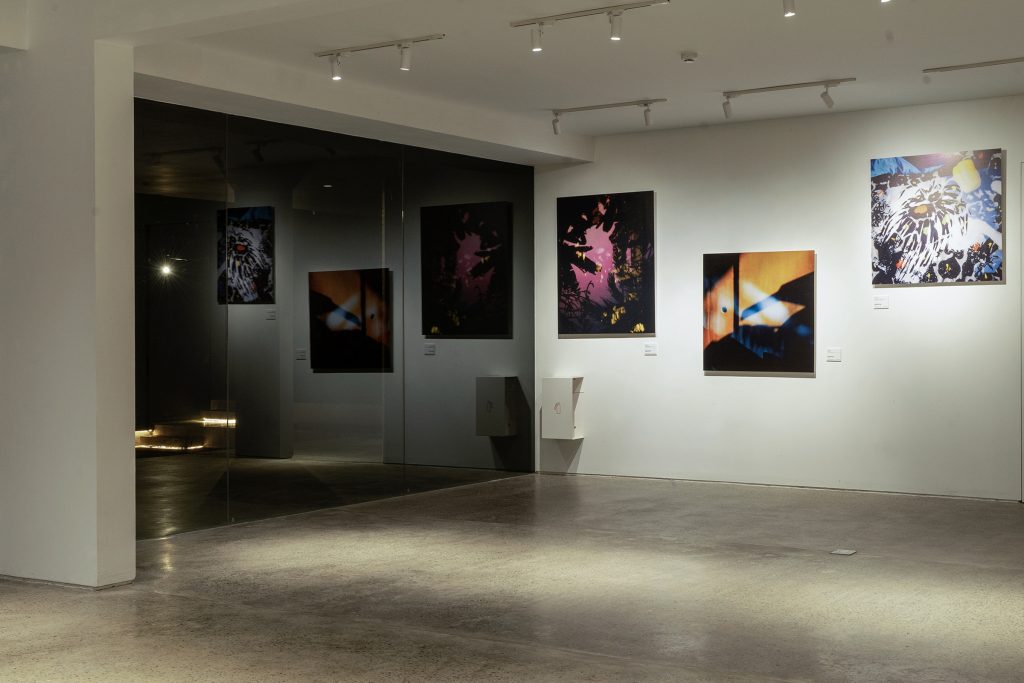Interview: Krisna Sudharma of Pesona
The Balinese creative shines a light on six Indonesian photographers in the group exhibition, “Curated the Sun”

Humble but impressive simply describes Krisna Sudharma—and perhaps the island he comes from. The Balinese creative seems happy just to work quietly, but his talent speaks volumes. You can see this in his colorful, abstract graphic designs that grace years of Potato Head’s coveted gig posters. And in his artistic vision for the recently launched Indonesian ready-to-wear label Uma Bumi, which uses a softer palette to modernize Indonesia’s rich heritage. But the thing that most visibly has Sudharma’s personal touch is pesona, a multi-hyphenated collective born out of record shop discussions in early 2018. In a group of mostly DJs, he’s “just the creative guy.”

From art openings at The Slow to fashion collab parties at Studio Eksotika, pesona always brings the tunes, the vibe and curious like-minds. But with the pandemic putting a halt on large gatherings, Sudharma decided they should work on something a little more low-key. The upshot is Curated the Sun, an exhibition that lends viewers the same rays of optimism they might find dancing to a rare Indonesian disco track at a pesona party, but through photography.
The show—which is on view inside the gallery space of the Andra Matin-designed hotel, Titik Dua—highlights six photographers: three experienced and three emerging. It also includes a 60-page zine of curated snapshots caught on phones, limited edition merch (“the T-shirt design is just me trying to freeze the moment that we have now so in the future we can remember,” Sudharma says) and, of course, some musical moments—like local psych-rock band Rollfast, who performed an improvisational set in response to hotel’s architecture over opening weekend.
We caught up with Sudharma over email to learn more about it all.

Tell us about pesona. It’s a collective?
We’re trying to be ourselves, and not to force being something that we’re inspired by. We’re just doing something which we will always feel proud to wear, something that will always be good to listen to, and be a pleasure to celebrate. So if someone has that same feeling, we really appreciate it.
In the beginning we were just a group of friends that hung out at Studio Eksotika, one of the audiophile record spaces here in Bali, Indonesia. One of us was always working there and we would select and listen to our favorite tunes or records that we just bought. We would discuss the sleeve covers from the records that really related to us here in Bali, how they visualized and illustrated the exotic seaside and all the beach elements, the quirky parts from costumes. The set of the artists, we found it really fascinating and sometimes we joked a lot about it. Unintentionally, we ended up having the chance to throw a small party—we invited friends from Jakarta and Europe that were willing to play. And that was the first event that we did as pesona.

Instagram says pesona is “an exotic pursue odes of amaranthine isle.” What does that mean to you?
It’s a phrase that I made myself to represent where we met and why we founded pesona. The most beautiful sunset, I think, is the shade transition between mostly purple, pinkish and little bit of orange color, that’s how I decided to use the shores of an amaranthine island. Another thing also about the amaranthine is in the beginning we founded pesona in the belief that Bali has everlasting and exquisite culture. The only concern is that when we impersonate this entity with contemporary practice, we do it in the right corridor without misrepresenting the culture. We always try to communicate and visualize Bali effortlessly, with a different kind of aesthetic.

Did you think that Bali was missing a modern representation of creativity?
Bali has so much potential in terms of creativity and craftsmanship, as well as a history of art and the cross-cultural exchange from foreign artists that have resided here, such as Nieuwenkamp, Miguel Covarrubias, Walter Spies, etc. The challenge that we face here as Balinese is, “How are we trying to manage our own traditions while welcoming foreign cultures?” At the same time, we need to keep up with this fast-paced world.
Some of the Balinese might need to sacrifice their time for “ngayah” (volunteering with the banjar, the Balinese Communal Group) to learn, get more experience from abroad, or even just work with a company to gain the fresh perspective of how we can preserve and sustain our culture. But again, if we can face this situation and find our own rhythm to balance it, it’s gonna be really beautiful—and at the same time we will progress as Balinese because we know how to preserve, welcome and grow.

Tell us about the concept for Curated the Sun.
There’s no criteria in the beginning because we just wanted to make this showcase. It’s really small because we know during the pandemic no one will fly over just to see the exhibition. This is just how we were trying to shift at the moment. So we contacted some friends that we know in person and tried to share the idea. And it turns out everyone was excited about it, but after a long discussion and meeting other friends, and then others, going back and forth, the curation shaped unintentionally: it features three experienced photographers and three emerging photographers Nadia Razak, Putu Sayoga, Muhammad Fadli Rubben, Pierre Zylstra, and Nikolas Artha], 17 zine contributors and 13 artists that we will host to showcase their works as part of a weekly program within the month-long exhibition.
The work itself is basically ongoing projects by each photographer. What I tried to capture when curating the artwork is life of the seaside that we can appreciate as a reminder that we are in this together, the ageless beauty of the sunset, people’s routines and the traditions that have been sustained for a long time, and in life we both experience appearance and disappearance, and unfortunately now we see a lot lost and disappearance, and Curated the Sun is a humble beginning of how we are trying to start small steps and see the possibility.

Why was it important to include established and emerging photographers in the exhibition?
This is just a personal thought: if we can collaborate between the experienced and emerging artists we can have a really interesting exhibition. This will be another milestone and a bridge for the youngest artist and the well-experienced one can learn a fresh perspective from the youngest.

Is Bali metaphorically in the shadow of the sun right now because of the pandemic?
In Indonesia, Bali is the province that got really impacted by this pandemic. All the persons that work in the hospitality industry, now they turn around and try to find any possibility that they can to survive with this situation, and I think this is like the trigger for everyone; we should always have an option for anything and not just depend on narrative tradition.
Maybe it takes two or even five years to recover from this pandemic, but we can’t just wait and see, we need to start all over again. Whether you’ve been entrusted with a leadership role before or you just started a new venture, I believe everyone now has the same possibility.
Curated the Sun is on view in Ubud, Bali at Titik Dua, through 12 November 2020. Merch can be purchased by messaging pesona through Instagram.









